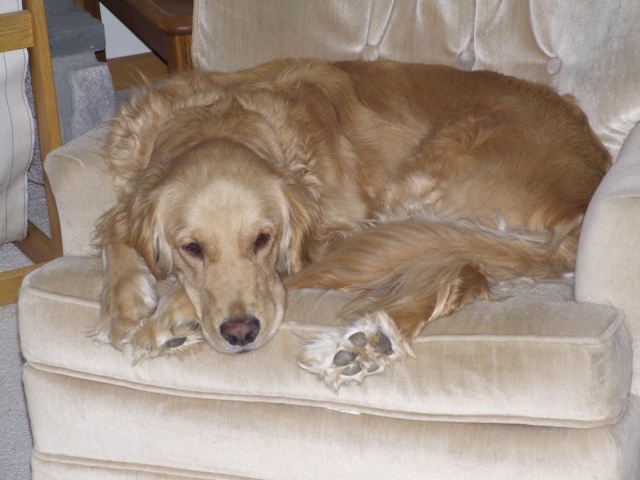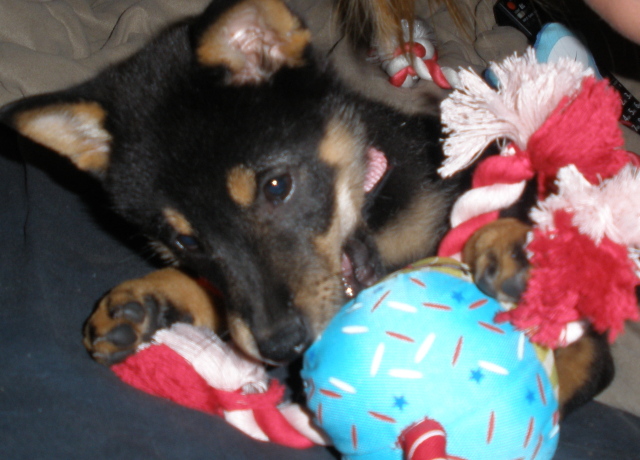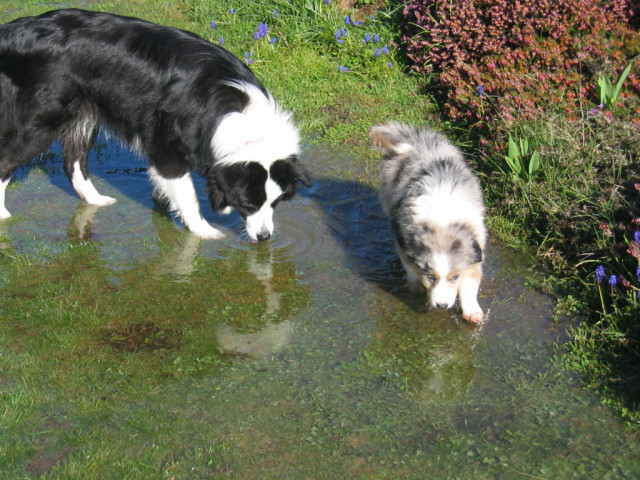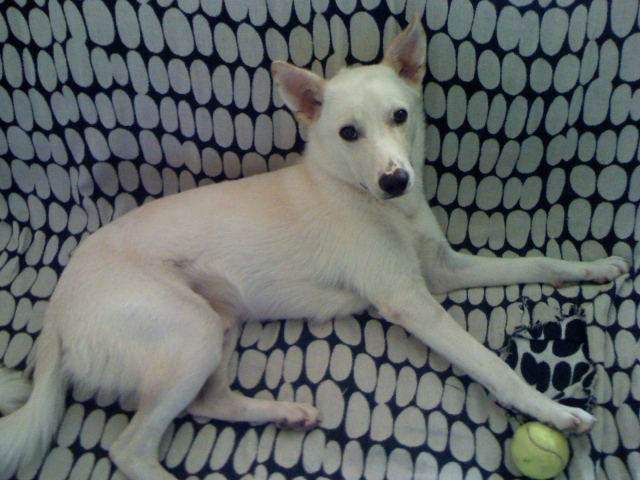QuestionHi Jill,
I have 3 dogs at home; one male pom/chi mix (1yr), one female maltese/yorkie mix (6yr), and one female border collie (3yr). All three dogs get along great, unless it comes to treats and such. Then they growl and occasionally nip. My main problems are with the yorkie/maltese and pom/chi.
The border collie isn't so much of a barker, but just likes to woof at passing people and dogs. The other 2 bark at opening garages, opening doors, and people walking down the stairs. Also whenever the border collie barks, the other 2 follow. When it is time for their walk the 2 go absolutely bonkers and will bark and bark and bark, from the moment i take out the leash, put it on them and drag them outside. Even then they STILL bark! They even try frantically to remove their collars by pulling and tugging. Luckily, they usually calm down after 15 mins of walking/human tug-of-war.
With the peeing, it seems that no amount of walking and letting them out do the trick. I know that they can hold their pee in, since they have never had a problem before. However, in the last few months, they only hold it in for 30 mins, then they just let it out where-ever they see fit. I have tried crate training them at night so they can hold their pee in, but as soon as they go in, they whine and scratch until we let the out. I've tried to let them whine for a few nights, but by the third night, one of them had bleeding nails.
I have gone to previous training with a well known canadian training group called barkbusters. Unfortunately it was quite a waste of money=( I followed their training methods, and I still have 2 very ndisciplined dogs. I'm at my wits end, and I really do not know what to do!
I have no idea how to get them to stop barking at opening doors and garages, and no idea how to get them to relieve themselves at the appropriate time!
AnswerEliminating bark response to stimuli as strong as opening doors, garage doors going up/down, doorbells, people knocking at doors, even telephone ringing, is quite difficult with one dog. In your case, you have two setting one another off. These are normal behaviors in dogs and the smaller breeds seem to have a greater penchant for 'yapping'. The way to eliminate a problem behavior is to train it, thereby getting control of it. In your case, learning everything you can about positive reinforcement training can only help! Not only will interacting with your dogs in this manner promote you psychologically (which will help greatly in your struggle with the leash and collar at walk time) but it will give you a list of commands which you can use to reward what you LIKE, while ignoring what you don't like. I suggest (as I often do) that you go to Karen Pryor's website. She introduced clicker training to dogs many years ago. However, instead of using a clicker (since you have a multiple dog household), I suggest you condition EACH DOG to something different (and do it separately), such as a word (nonsense word) or physical behavior (touching your nose, pulling your ear lobe, etc.) Once you've gotten the basics of what the clicker is (by reading karen's literature) and how to 'charge' a clicker (condition a dog to understand the the CLICK is THE REWARD -- of course food treat follows and can be randomized and then eliminated over time) you will easily be able to adapt this from the clicker to a visual or verbal tool.
Once you have 'charged' your 'tool' (visual stimulus, verbal stimulus, different for each dog) you can then work individually with each dog for short intervals each day and teach one behavior at a time. Training any dog with positive reinforcement who has been previously trained with coercive techniques (collar, punishment, etc.) is called 'crossover training' and new words need to be used: not "sit", or "down" or "come" or "stay", in order to create in the dog's mind a new environment. You'll be amazed at how quickly dogs respond to this sort of training (especially your border collie!). Within several weeks of consistent re-training, you will have ONE SOLID BEHAVIOR from every dog and you can then begin to work them together. Once you have done this successfully, CHARGE YOUR CLICKER so you can reward them all at the same time ONLY for the behaviors they can successfully give you 100% of the time. For new behaviors or those still under construction, use your visual or verbal tool.
Normally, once a dog has learned to comply and offers 100% successful response to a cue (command), the rest is very easy (even the most difficult behaviors such as down/stay). You can now use your new training technique to re-shape what goes on at collar/leash/walk time. Incorporate the collar/leashes into your training program; you can even teach each dog to get its own collar/leash. Be creative because when it comes to this sort of training, the sky is the limit. Within a very short time, all three dogs should be far more cooperative when it comes to collar/leash/walk time. If one offers more trouble then the others, spend more time alone with that dog re-training the behavior.
As for garage door/front door/doorbells, et al, training a bark response in each dog also enables you to train an 'enough' response. The psychology of the dog is such that when the pack leader's attention has been drawn (and you should be the pack leader), the 'alarm' (barking) is no longer necessary. Capturing the 'bark' by teaching a 'watch it' or 'speak' response will also capture the 'enough' response. HOWEVER, totally disengaging the natural response to barrier awareness (such as doors) is almost impossible without eliminating the stimulus for some time (which means not using doorbells, garage doors, etc.)
As for house training, your small dogs are no doubt marking over one another and perpetuating a cycle of 'mistakes'. It takes up to three full months of persistently rewarding proper elimination (while thoroughly cleaning up scent of soiled indoor areas and avoiding repetition of these mistakes) to acquire a fully and reliably housetrained adult dog. Because both these dogs are small, I suggest that during your retraining you use dog diapers. While this can be expensive initially, they WORK because most dogs do not like the feeling of wearing a garment they have soiled by toileting inside instead of the place where they are REWARDED (outside.) Giving the dogs a verbal cue when they go outdoors (and they should be put out in the same area so the scent is present and they acquire a pattern of elimination behavior) also expedites training. The dogs will very quickly learn your verbal cue (such as Time to go pee!) and they will then connect it with their choice of rewarded behavior (peeing outside.) Within six weeks or so, you will most likely be able to eliminate the dog diapers.
Please repost with any further questions regarding this advice.

 aggression in aging dog
Question
Niko
I have a thirteen year old, female, Samoy
aggression in aging dog
Question
Niko
I have a thirteen year old, female, Samoy
 My Shiba Inu
Question
Lola
I bought a registered Shiba Inu puppy fro
My Shiba Inu
Question
Lola
I bought a registered Shiba Inu puppy fro
 Dog in Heat?
QuestionLily and Jorge
QUESTION: Hello,
We have
Dog in Heat?
QuestionLily and Jorge
QUESTION: Hello,
We have
 Dog walking problems
Question
Snickers
I have been trying to train my dog SN
Dog walking problems
Question
Snickers
I have been trying to train my dog SN
 My dog is shaking and hiding under my bed recently
QuestionRorrie and Pencil
QUESTION: My dog, Rorr
My dog is shaking and hiding under my bed recently
QuestionRorrie and Pencil
QUESTION: My dog, Rorr